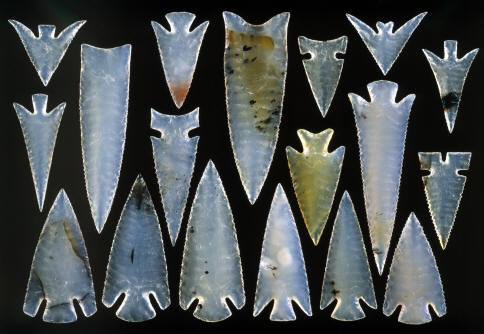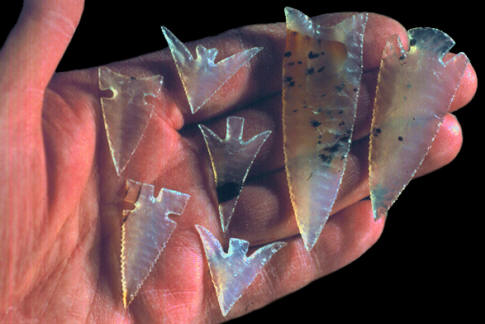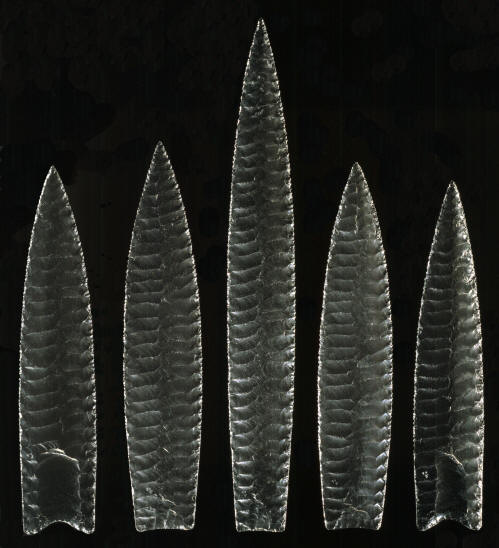|
|
|
It wasn't until 1979 that Jim Hopper saw his first flake-over-grinding point when Bill Hart, showed him a point made by Richard Warren. Richard Warren is the man that many believe was the first to reinvent the flake-over-grinding technique in modern times. Especially if you consider his volume of production. Right away Jim says he could tell that the point had been ground. Fellow flintknapper Bill Hart "talked him into making a few bucks" and showed him how he could chip agate by first heat treating it. Jim says "he did not realized that it had to be cooked (heat treated)." |
|
|
In 1981 Jim Hopper got a job at the Richardson Rock Ranch. It was there that John Richardson ground a blank on a diamond machine and, as Jim says-------"bingo!" It still took him awhile to figure out the pressure flaking platforms and even after he figured them out he was still having trouble. The breakthrough came when Richard Warren gave him one of his points and he could see the remnants of sanding on the edges. At this time Jim says------"bingo again!" This was in 1982 and Jim Hopper says "he has been doing the same work ever since and has continued to improve on his edge work to a finer degree." |
|
|
Jim says his highest demand for his flake-over-grinding points is at the present time. His favorite point to make are Paleo types. In outline, some of them look like Agate Basins, Clovis and Dalton points. His favorite materials to chip are Indian Paint Agate, Jasper and Sunset Agate. Most of his customers are artifact collectors of both old and new points. |
|
|
|
|
Flake-over-grinding technology, in the ancient world, represents the highest level of the flintknappers craft, a sort of "golden age" before metal replaces stone. This has happened in two areas of the world. In northern Europe during the late Neolithic period large knives, known as daggers, were made for a short period of time with flake-over-grinding technology. Also, in North Africa, during the Predynastic period, Gerzean knives began to be made. The Neolithic daggers of northern Europe and the Gerzean knives of Predynastic Egypt represents the most skillfully crafted flaked stone artifacts that were made by Stone Age cultures. |
|
|
|
|
Jim Hopper has produced some of the finest quality, uniformly pressure flaked, points that have been made with flake-over-grinding technology. He has certainly made more of them than anyone else. Most all of the pieces that he's made in recent years are signed microscopically on one of the basal corners. Jim's artwork is also reflected in the high quality and colorful stone that he uses. There is no doubt about it, Jim Hopper has made a permanent place in the world of modern lithic art and his points will continue to be represented in collections around the world. |
|
|
"REFERENCES"
2006,
Personal communications with Jim Hopper. |
|




